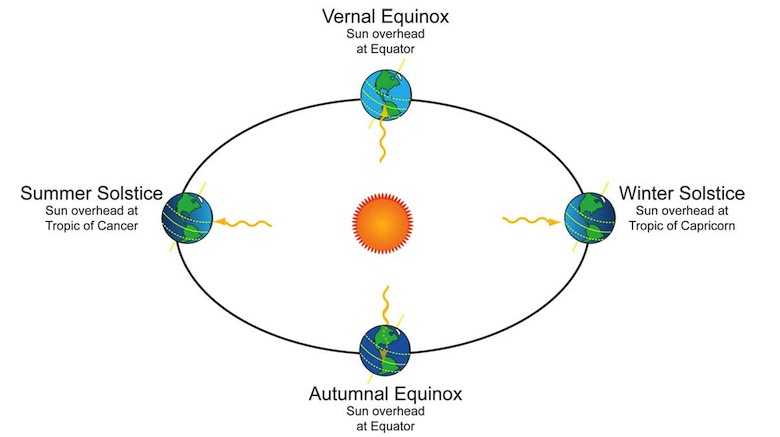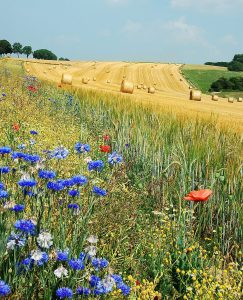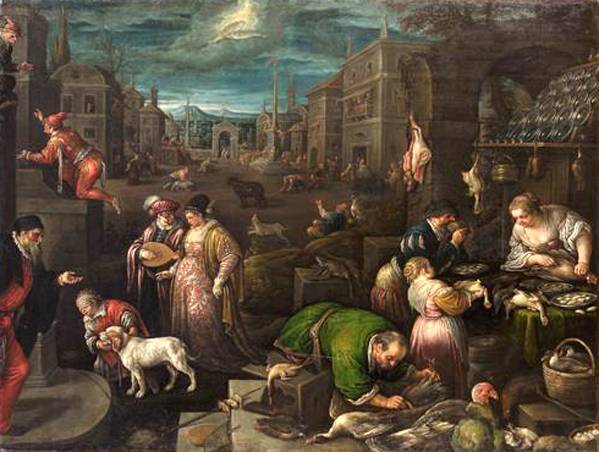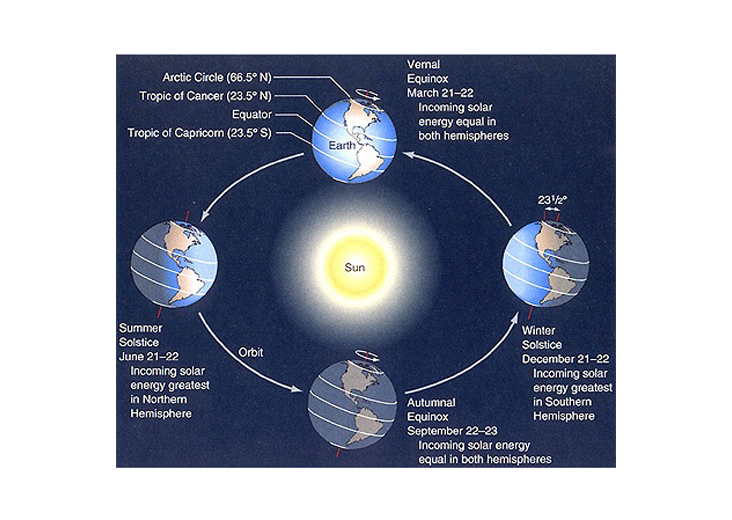With the Summer Solstice today, summer officially begins in the Northern Hemisphere. Below the equator, the seasons are reversed, and it is the Winter Solstice. The June Solstice takes place between June 20-22. To determine the exact time of the Summer Solstice in your area, go to timeanddate.com.

Image: NASA
Summer is the warmest of all the seasons with daylight hours the longest. The Summer Solstice has the longest day of sunlight. Prior to the solstice, daybreak gets earlier, and sunsets much later. While it gets warm and dry in North America (except for thunderstorms and hurricanes) and Europe, other areas particularly in Asia see tremendous amounts of rain called monsoons. Summer is usually time off for students in schools and universities. Also, many take time off from work to celebrate vacation with their family and friends. A lot of sporting events and outdoor concerts take place during this time as well. In areas of the far north, the sun never truly sets during this period (and in wintertime the sun never really rises either).

Image credit: Luc Viatour (via Wikimedia Commons)
The Summer Solstice (or the local beginning of summer depending on custom and tradition) is celebrated in different ways. Some light bonfires, houses are decorated with festive banners, and special foods are eaten. Some go to Stonehenge and watch the sunrise of the first rays of summer. In Sweden, it is tradition to have the first strawberries of the season and the first full moon after the solstice is called the Strawberry moon. In some places, Midsummer’s Day is celebrated on 24 June preceded by Midsummer’s Eve. Since summer means then end of long and dark winters in some places of Europe, lighting torches and bonfires became a way to note it, sometimes in town squares or mountainsides.
Sources
Summer Solstice 2024: When is the first day of summer? (2024, June 17). Almanac.com. https://www.almanac.com/content/first-day-summer-summer-solstice
June Solstice: the Longest (and Shortest) Day. (n.d.). https://www.timeanddate.com/calendar/june-solstice.html
Wikipedia contributors. (2024, June 3). Summer. Wikipedia. https://en.wikipedia.org/wiki/Summer









